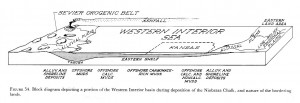My aquarium experiences started off as something of an accident. My partner and I were given a 5-gallon fish tank with a simple over the side fiberglass filter. The tank also included a few guppies and mollies.
We set up the tank on a small aquarium stand near our eating area. It turned out that the tank became our mealtime TV. We could watch the fish swim and eat while we ate our evening meal. The slow movement through the water was accented by the mating chase and the territorial disputes. It was exciting the first time we saw a baby fish being born. It was just as moving to see that same baby fish become fish food.
Knowing very little about having an aquarium we also knew very little about how to best keep our newborn fish alive. One store suggested we use a breeding cage. The idea of the breeding cage is to place the mother inside a mesh cage or trap that would permit her to give birth. The babies would fall through the cage openings and the mother would not consume them. As you can easily imagine, this only protected the fry from the birthing mother and not from the other fish. In order for that method to be effective it would require that each mother have a tank of her own until she was finished giving birth. That did not sound like a workable idea for us.
Similar to the cage is a breeding plate. This is a mesh plate that is inserted into a tank slightly above the aquarium gravel. The idea is that the fry can fall below the plate and have a protected area to start their life. We did not like the appearance of the plate and it made cleaning the gravel impossible. For a breeder who wanted to collect young fish and didn’t care how the tank looked this might be a good method of separating newborns from adults.
Another suggestion was to have lots of plants for the fry to be dropped in or near. They could then hide and avoid being eaten by all the bigger fish. This idea at least was workable. In our ignorance we planted the whole bottom of the aquarium in plants. The plants were not properly anchored down and soon we had one of the biggest floating gardens I have ever seen. All we could see was the floating garden, no fish. With a little practice, observation and a bit of advice from knowledgeable shop owners we learned the proper balance of plants to fish and other aquarium ornaments.
Related Post
Essential advice for starting a home aquarium
Aquarium gravel and water
Aquarium Stands, Options and Considerations
Aquarium backgrounds explored

